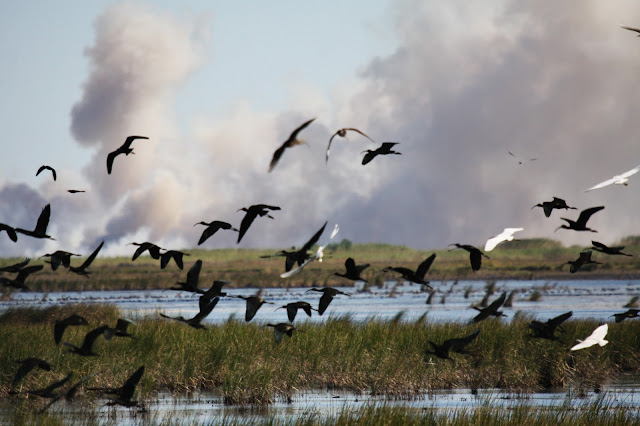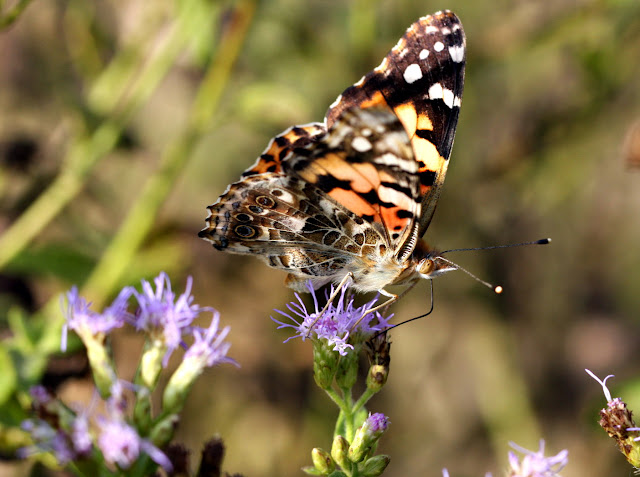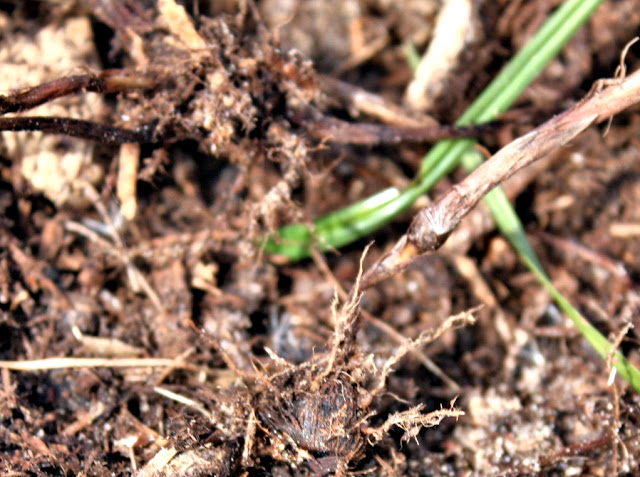Time: Friday, November 6, 2010
At six o'clock, a great horned owl greets me as I sit on my trailer stoop drinking coffee. Soon it is joined by the dawn yipping of coyotes.
I'm in my fifth day working as a live-in volunteer and living in a trailer supplied by Anahuac. Today I'm slated to do trash pick-up, then make a mold of a toothache tree,
Aralia spinosa. I also need to continue weeding the butterfly garden.
Then I'm running the trash route in my big hunker of a truck - I need two hands to pull my myself in - and listening to the Houston traffic report, listing street after street of traffic problems. I realize I have a different traffic problem- I can hardly drive for watching the birds. The sky and telephone poles and a few still standing trees - most died in Hurricane Ike - are full of hawks - red tailed, kestrels, and harriers. Killdeer are playing chicken with me by sitting on the road until I am almost upon them. Clouds of red-winged blackbirds are everywhere and there are other clouds of thousands of tree swallows. They sit in huge groups of several hundred to several thousands on the forbs, filling most of a field, then fly in waves to land again.. In the skies, they looked like the blackbird clouds but with flashing white undersides and a lighter flight. The skies are stitched by flocks of snow and greater white-fronted geese as well as white and white-faced ibis. Great and snowy egrets stand in wet fields and ditches.
Later, I find and identify the
Aralia spinosa and get ready to make a latex mold of it's warty trunk. Then I decide I needed to document the steps and go back for my camera. On the way back, I see the refuge staff has started a controlled burn to make more habitat for our geese and ducks that are just starting to arrive here. The smoke is so beautiful that I have to take lots of pictures.
 |
| A picture of the controlled burn |
Then I find the latex is a semi solid and will not work so I drive down to check on the birds in a wet site in the non-hunting area. It is full of white-faced and white ibis, great and snowy egrets, several kinds of ducks, dowitchers, greater and lesser yellow legs, and snow geese. Again I have take lots of pictures.That hunky pickup makes a wonderful shooting platform.
 |
| A view of the wet area with ibis and egrets |
|
|
|
 |
| Mostly snows with a few greater whited fronted geese |
I ended work by weeding nut grass. So far, I've worked a total of about 5 hours there just removing nut grass. I've cleared about thirty square feet and removed five buckets of grass. So I'll be working on this project a long time.
I'll try to catch you up on my living arrangements and the the gardening plans to replant after Ike killed most of our trees and parts of our prairie and butterfly garden. And I'll try to get the mold made and share the process with you. This will be part of the displays in our new visitor center which is scheduled to open sometime during next February. So plan to come visit us next spring.
















